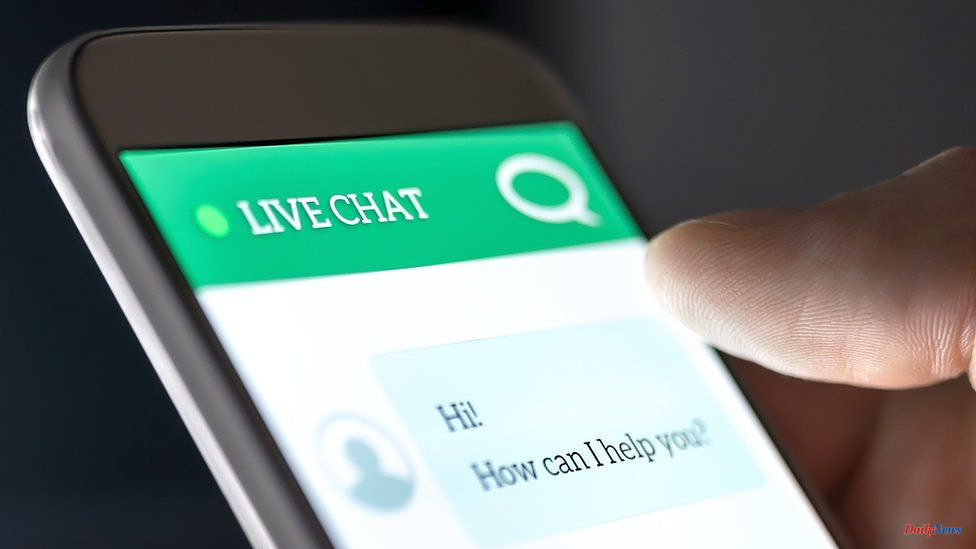The chatbots made headlines in the last few days, after a Google engineer claimed the most advanced system of the company had developed human-like emotions or become sentient.
A chatbot is simply a computer program that mimics and responds to human speech.
How lifelike is the best virtual assistants on the market? These intelligent virtual assistants are everywhere now, that's for sure.
An estimated 80% of people now use chatbots, whether they respond verbally or through written text.
Chatbots are the fastest-growing method for brands to communicate with customers.
Sabina Goranova is a York University student in Toronto, Canada. She is used to chatbots every day.
First, Alexa is at her home. Second, she consults with the university's Savy system via her smartphone to locate necessary college information.
IMB created Savy for York and its students. It is able to quickly answer any questions, from career advice to daily lunch menus.
Ms Goranova says, "I like the convenience of chatbots." "I have already used Alexa to save my time, so Savy is an additional tool in my toolkit."
Guillaume Laporte, chief executive of French chatbot company Mindsay is now part Chinese artificial intelligence (AI), and intelligent virtual assistant firm Laiye. Customers include Avanti, a UK train company, and Nike.
He says chatbots are starting to imitate human behavior, but with robots essentially.
Mr Laporte says that chatbots are "10 times more powerful than they were 10 year ago". He adds that they can understand and respond to what users say or type after they have been programmed.
He warns, however, that chatbots used across the industry are not yet perfect and that it is important to have a human back-up. The understanding rate varies between companies and industries. It can range between 30% and 90%.
Jim Smith is a professor at the University of the West of England in interactive artificial intelligence and an expert on chatbots.
He explained that it's important to distinguish between service-oriented workers who are expected to talk about the things they do and those who are primarily focused on delivering services.
He adds that the "future" are the most popular and can be used well. They are taught with masses and masses upon masses of text.
"They can provide human-like customer service if they are in a call center and know what kind of questions they will be asked. It is important for transparency that the caller knows that they are not speaking to a human.
Chatbots who are expected to have more conversation with you can appear convincing to begin, but they are using statistics to figure out what they should be saying next. Errors can multiply.
"And if the systems become very good, say in ten years [time], then it is difficult for us to determine what is a human-like performance. Pet parrots seem to communicate with you, I'm referring to the fact that they appear to be speaking to you!
"And I don't think it is meaningful to ever claim that a chatbot can communicate with humans. It can be turned off and on again. But it is not a living thing."
Professor Sandra Wachter is a senior researcher in AI at Oxford University. She says chatbots are "still far from appearing lifelike or humanlike".
She adds, "But as our progress is made, we must also consider ethical responsibilities." Chatbots may appear to be chatting with real people at first glance. We have an ethical obligation to avoid confusion as it can cause potential harm.
It can lead to frustration when chatting to the bot, even though they are limited in functionality. Worst case scenario, they might be trusted and we may share information we wouldn't otherwise.
Seth Dobrin (IBM's global chief AI officer), emphasizes the advantages of chatbots. Seth Dobrin cites in particular their increased use during the coronavirus epidemic to relay important health messages.
He says, "Take the National Health Service Wales as an example." "In 2020, they created Ceri, a virtual agent to answer citizens' questions in a conversational tone. Topics covered include how to manage anxiety and uncertainty, how to protect yourself and your family, how to manage fatigue and managing symptoms such as fatigue.
The series New Tech Economy explores how technological innovation will shape the future economic landscape.
Many people dislike chatbots, and want to speak to someone real every time. Stuart Duff, a psychiatrist from the UK, Pearn Kandola says he sympathizes with this sentiment.
He says that chatbots are disliked by many people for a variety of reasons. But, they also get annoyed when they try to be human. Trust with others is built through transparency, empathy, and the ability to detect subtle tones in communication.
These are the reasons we can quickly "click" with others. It is why we have to be careful if others don't get our point of view or sympathize with us.
He said that chatbots have made great strides over the years but they are still "basic programmed communicators" and are prone to miss important words, tone, or humour.
Follow Will Smale, editor of the New Tech Economy series on Twitter.












